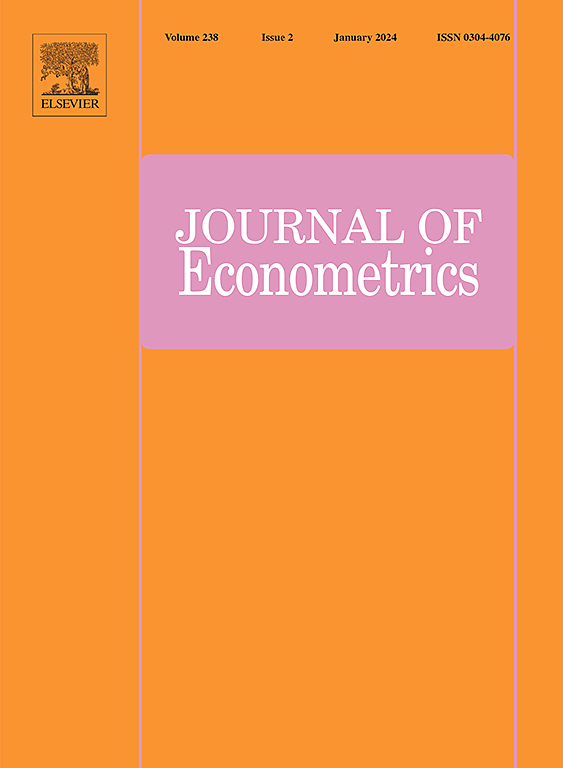Shrinkage estimation of spatial panel data models with multiple structural breaks and a multifactor error structure
IF 4
3区 经济学
Q1 ECONOMICS
引用次数: 0
Abstract
This study investigates spatial panel data models with a multifactor error structure and multiple structural breaks occurring in the coefficients of both spatial lagged and explanatory variables. While extensive research has addressed cross-sectional dependence in panel data, including approaches that integrate spatial and factor structures within a single framework, few studies account for time-varying model parameters and achieving consistent estimation remains a significant challenge. To address the dual challenges of endogeneity and time heterogeneity, we propose a novel penalized generalized method of moments estimation with common correlated effects (PGMM-CCEX). Specifically, this method addresses the endogeneity issue by utilizing the cross-sectional averages of regressors as factor proxies when constructing the internal instrumental variables, while employing adaptive group fused Lasso to detect multiple structural breaks. The PGMM-CCEX method consistently estimates both the number of breaks and their locations. Furthermore, the post-PGMM-CCEX regime-specific coefficient estimates are consistent and asymptotically follow a normal distribution. Notably, the method remains valid even when factor loadings vary over time, whether synchronously or asynchronously with the parameters of interest. Monte Carlo simulations confirm the satisfactory finite-sample performance of the proposed PGMM-CCEX method. Finally, we apply our method to analyze cross-country economic growth across 106 countries from 1970 to 2019, revealing the time-varying influence of key economic factors on growth dynamics.
具有多重结构断裂和多因素误差结构的空间面板数据模型的收缩估计
本文对空间面板数据模型进行了研究,该模型具有多因素误差结构,并且空间滞后变量和解释变量的系数都存在多重结构断裂。虽然广泛的研究已经解决了面板数据的横截面依赖性,包括在单一框架内整合空间和因素结构的方法,但很少有研究考虑时变模型参数,实现一致的估计仍然是一个重大挑战。为了解决内质性和时间异质性的双重挑战,我们提出了一种具有共同相关效应的惩罚性广义矩估计方法(PGMM-CCEX)。具体而言,该方法通过在构建内部工具变量时使用回归量的横截面平均值作为因子代理来解决内生性问题,同时使用自适应群体融合Lasso来检测多个结构断裂。PGMM-CCEX方法一致地估计断裂的数量和位置。此外,pgmm - ccex后的制度特异性系数估计是一致的,并渐近地服从正态分布。值得注意的是,即使因子加载随时间而变化(无论是与感兴趣的参数同步还是异步),该方法仍然有效。蒙特卡罗仿真验证了所提出的PGMM-CCEX方法的有限样本性能。最后,我们运用该方法分析了106个国家1970 - 2019年的跨国经济增长,揭示了关键经济因素对增长动态的时变影响。
本文章由计算机程序翻译,如有差异,请以英文原文为准。
求助全文
约1分钟内获得全文
求助全文
来源期刊

Journal of Econometrics
社会科学-数学跨学科应用
CiteScore
8.60
自引率
1.60%
发文量
220
审稿时长
3-8 weeks
期刊介绍:
The Journal of Econometrics serves as an outlet for important, high quality, new research in both theoretical and applied econometrics. The scope of the Journal includes papers dealing with identification, estimation, testing, decision, and prediction issues encountered in economic research. Classical Bayesian statistics, and machine learning methods, are decidedly within the range of the Journal''s interests. The Annals of Econometrics is a supplement to the Journal of Econometrics.
 求助内容:
求助内容: 应助结果提醒方式:
应助结果提醒方式:


